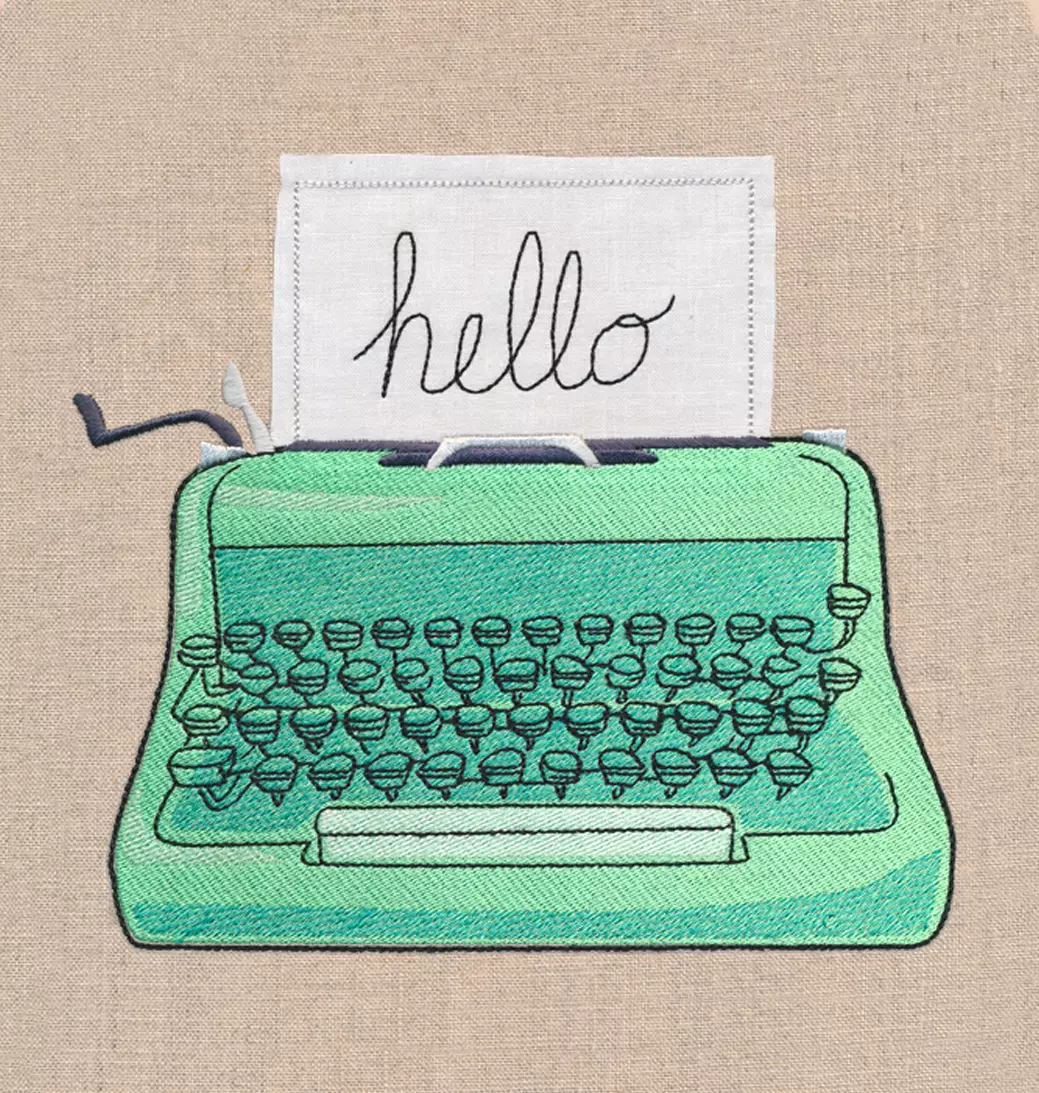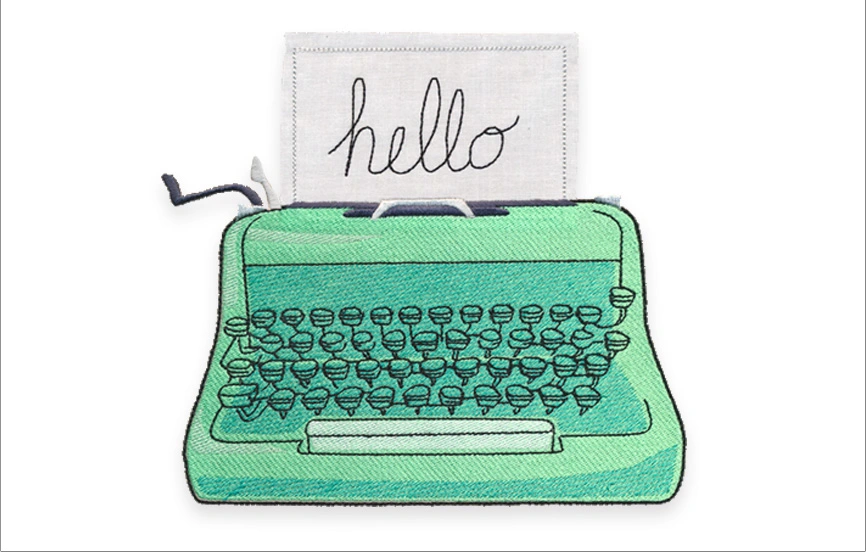Discover all the places that your imagination can go with the versatility of faux leather! This fabric comes in a variety of weights and styles, making it perfect for nearly any design. We'll show you the best practices for stitching on faux leather in this step-by-step tutorial.
Designs Used
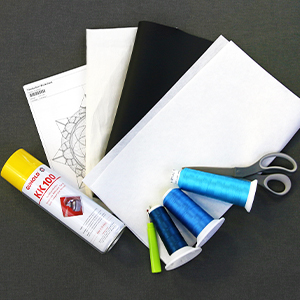
To stitch onto faux leather, you'll need:
- Your design of choice. We're using Magnetic Swirls Medallion
- Faux leather (pleather, koskin, Ultra Suede, leatherette)
- Cutaway stabilizer
- Size 11 or 75/11 sharp sewing needle
- Temporary spray adhesive (such as Gunold KK100)
- Embroidery thread
- Scraps of muslin or cotton fabric
- Seam ripper
- Scissors
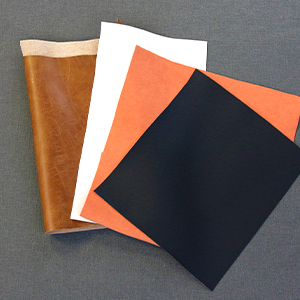
Faux leather comes in a variety of styles, sheens, and colors. The category of faux leather encompasses a variety of fabrics including artificial leather, koskin, Ultra-suede, leatherette, and pleather. The most common and easily found faux leather is pleather, which is what will be used in this demonstration.
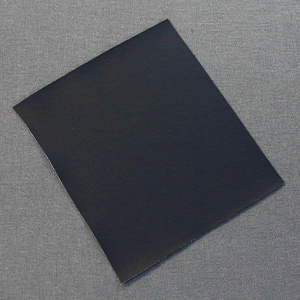
Pleather comes in unlimited colors, weights, and textures. It also has a touch of elasticity that makes it comfortable, versatile, and stylish for all sorts of garments or projects. Faux leather is a strong fabric that will support almost any weight or complexity of design.
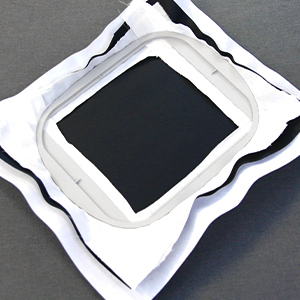
There are two ways of hooping faux leather. One is simply hooping the faux leather and stabilizer with some modifications to prevent the hoop from marking the fabric.
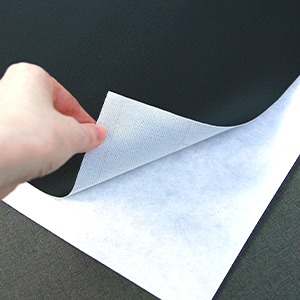
Before hooping, spray a piece of cutaway stabilizer with temporary spray adhesive and smooth on the back of the faux leather.
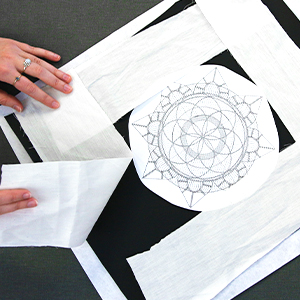
Then print a template of the design you will be stitching out and place it in the desired area. Next, surround the template with scraps of muslin or cotton. These scraps of fabric will act as a buffer between the hoop and the faux leather.
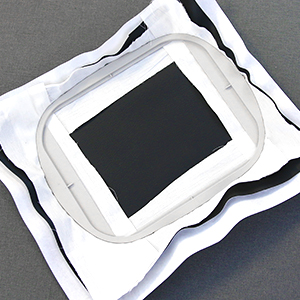
Hoop the faux leather and the scrap fabric pieces together. Make sure it is taut and there are not wrinkles.
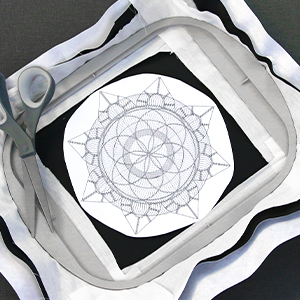
After hooping, replace the template to see where the design sits. If any of the scrap fabric pieces overlap the design, trim them away from the design, so they will not be embroidered over.
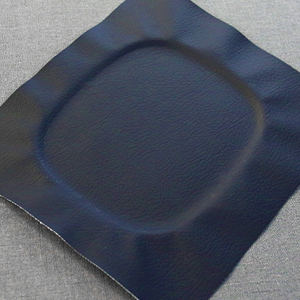
"Hoop burn" is when the hoop leaves a mark on the fabric. In woven fabrics, like cotton, this can be fixed by rubbing a small bit of water on the fabric, and pressing it with an iron. On faux leather, it is a lot harder to remove, and can sometimes be permanent.
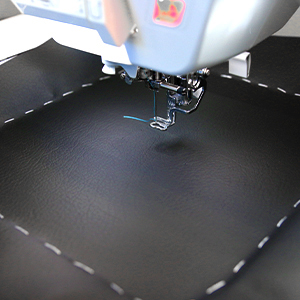
Another option for faux leather is to float the fabric on the hoop. Floating the fabric is when the stabilizer is hooped firmly by itself. The fabric is then hand sewn onto the stabilizer. This way the hoop never pinches the fabric, and there is no chance for hoop burn.
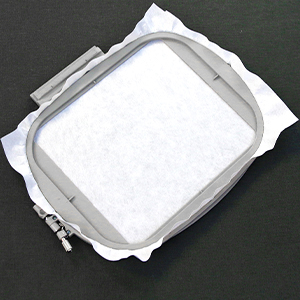
First, hoop the cutaway stabilizer by itself. Make sure it is hooped tight and taut.
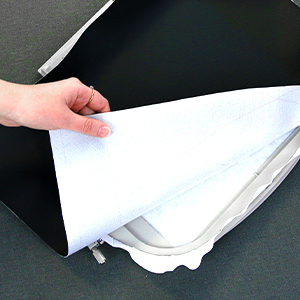
Use temporary spray adhesive and spray the backside of the faux leather. Then smooth it on top of the stabilizer.
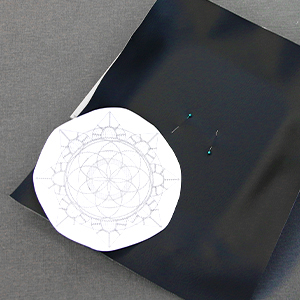
Pins can help keep the fabric in place as you sew it onto the stabilizer. For best results, pin only where the design will embroider. This way the embroidery will hide any holes left by pins.
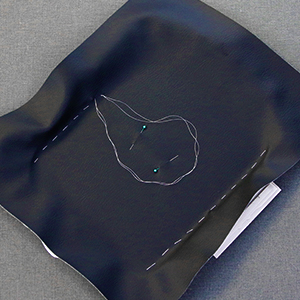
Use a hand sewing needle and baste around all four edges of the hoop. Make sure to smooth the fabric as you go to prevent any wrinkles from forming.
Once your basting stitches are in place, remove the pins. Doing so will prevent your needle from breaking during the embroidery process.
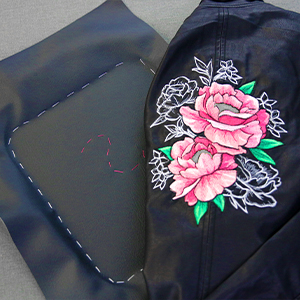
If embroidering a heavier design, it is best to baste some stitches directly under the fills of the design. This will prevent shifting while embroidering. For best results use the template to decide where to sew, and match your thread to the embroidery or fabric.

Attach the hoop onto the machine and load the embroidery file. Use a 75/11 sharp sewing needle. This type of needle has a finer point and will make smaller perforations in the stabilizer and fabric. Follow the color change sheet and embroider the design.

When the design has finished sewing remove the hoop from the machine. Before you unhoop the design, seam rip the basting stitches.
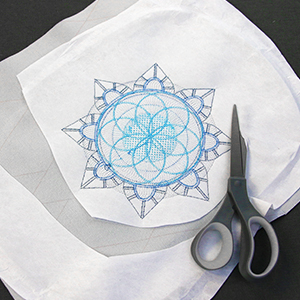
Once all of the basting stitches have been removed, trim away the excess cutaway stabilizer.

